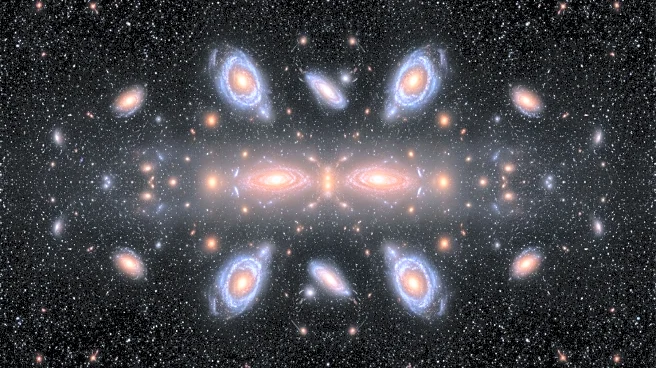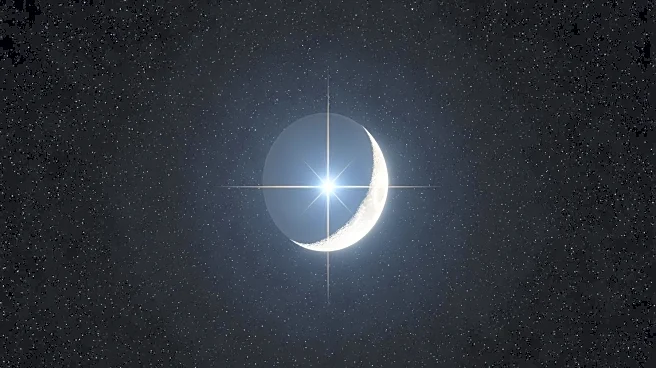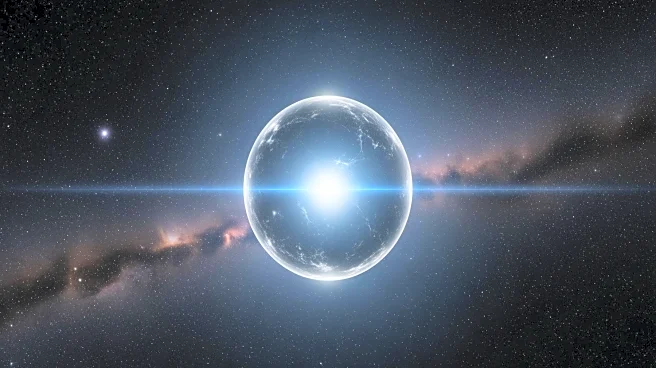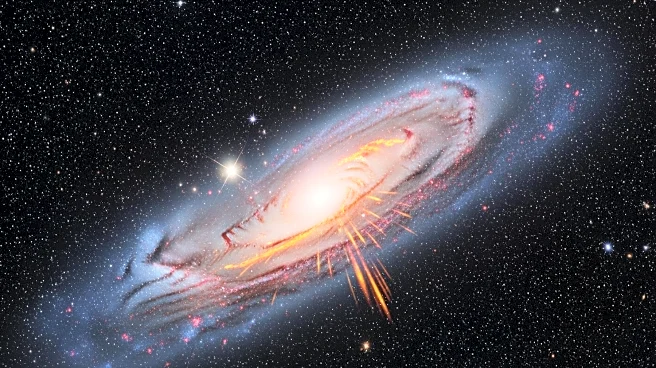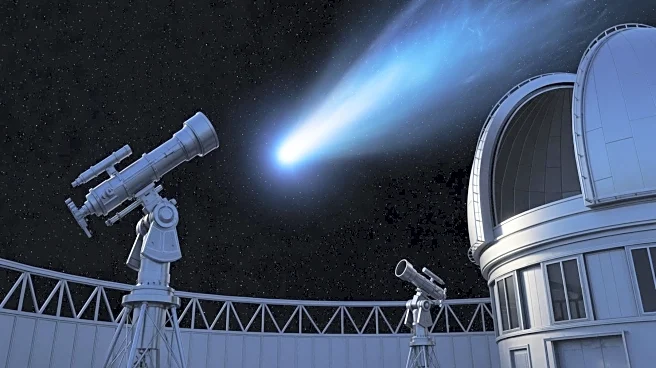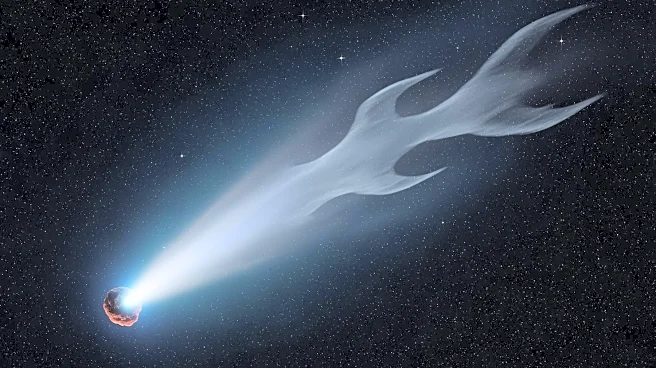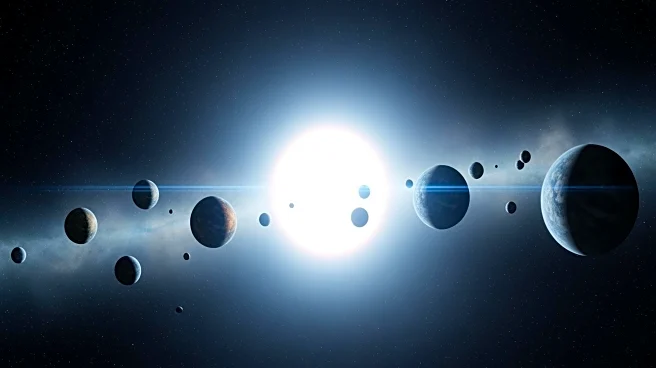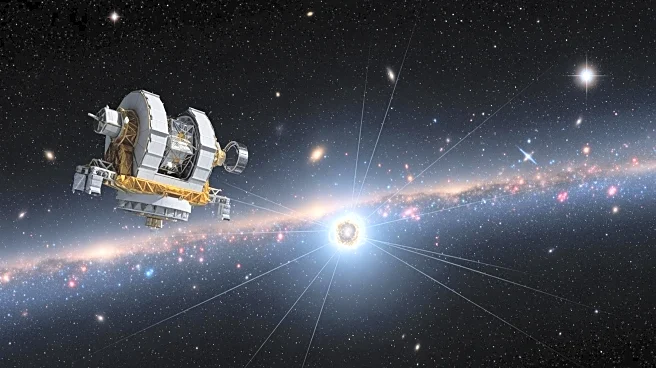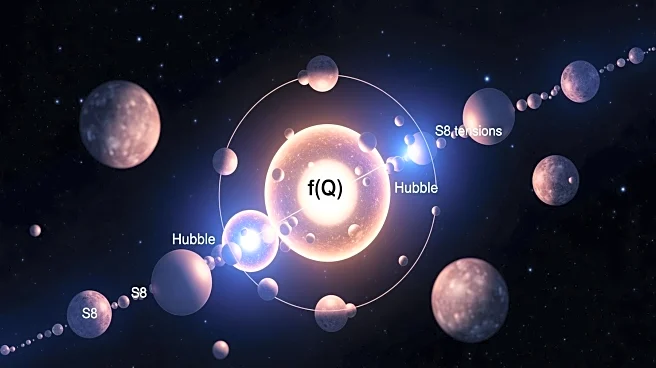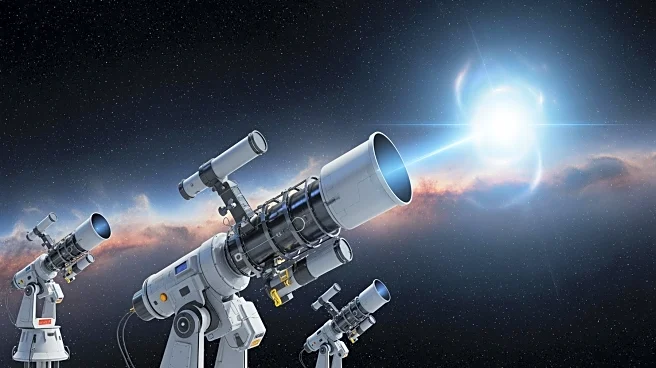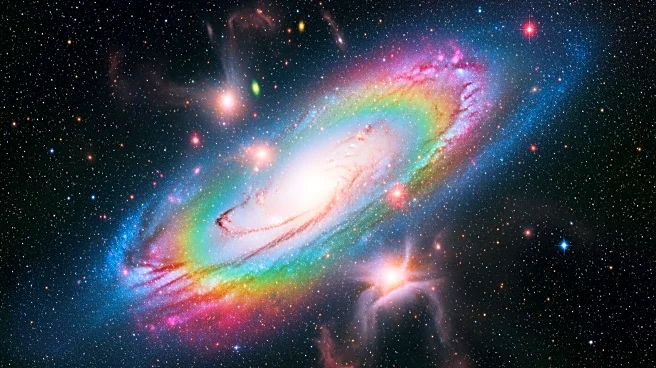What's Happening?
Astronomers have released the largest-ever catalog of galaxy clusters, compiled from six years of data from the Dark Energy Survey. This catalog provides a detailed view of the universe's structure, tracing the distribution of dark matter and dark energy.
The data was collected using the Dark Energy Camera on the Blanco Telescope in Chile, revealing tens of thousands of clusters across billions of light-years. The catalog aims to test the Lambda-Cold Dark Matter model, which describes the universe's behavior, and addresses the 'S8 tension' regarding matter clumping.
Why It's Important?
This catalog is a significant advancement in cosmology, offering a comprehensive dataset to study the universe's evolution. By understanding galaxy clusters, scientists can gain insights into dark matter and dark energy, which are crucial for explaining the universe's accelerated expansion. The findings support the current cosmological model, providing a foundation for future research. This work has implications for theoretical physics and could influence future space missions and telescope designs.
What's Next?
Future telescopes like the Vera C. Rubin Observatory and NASA's Nancy Grace Roman Space Telescope will expand this research, probing deeper into the universe's history. These advancements will likely lead to a more detailed understanding of cosmic structures and the forces shaping them. As technology progresses, the catalog will be updated, offering new opportunities for discovery and potentially resolving existing cosmological tensions.
